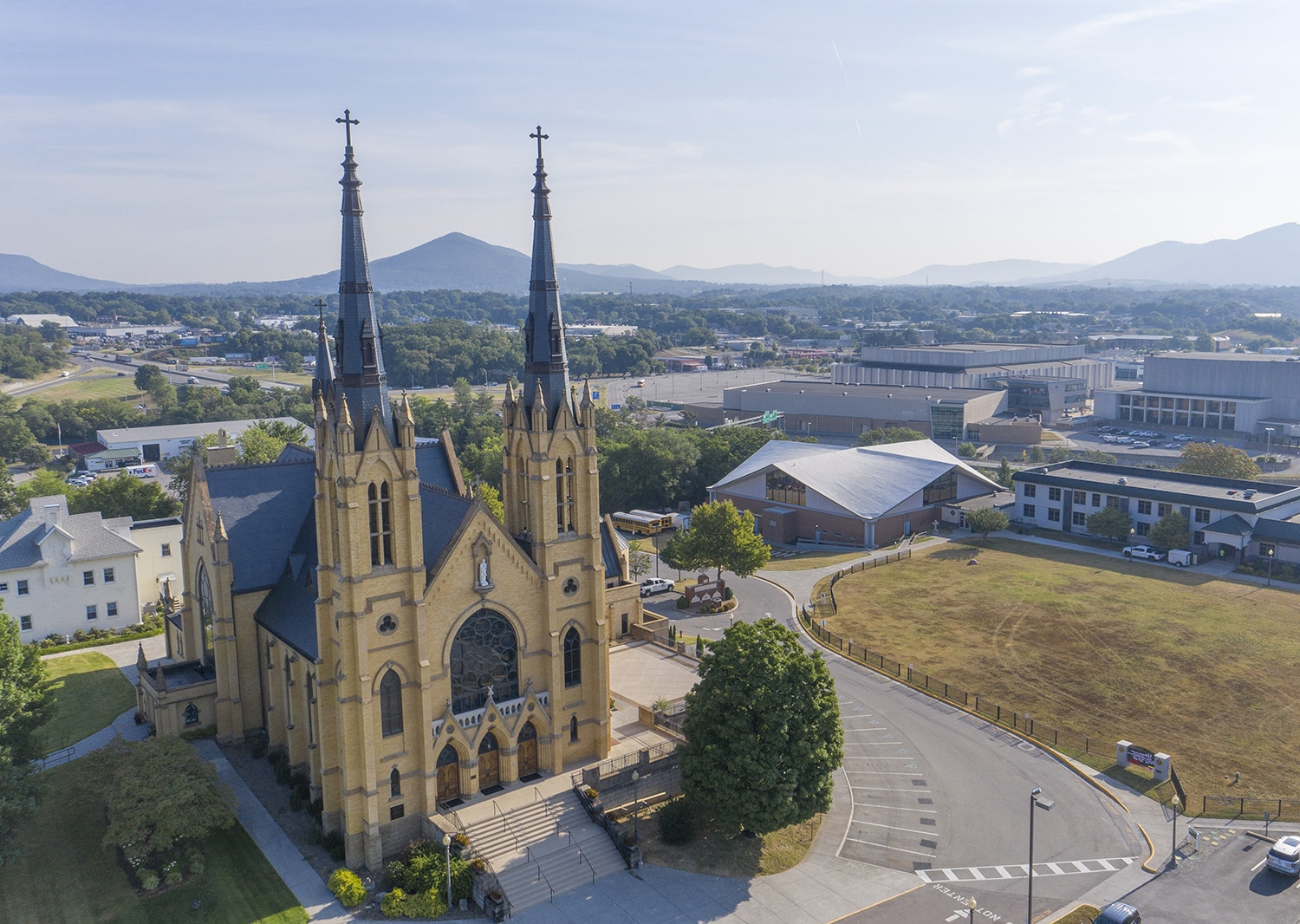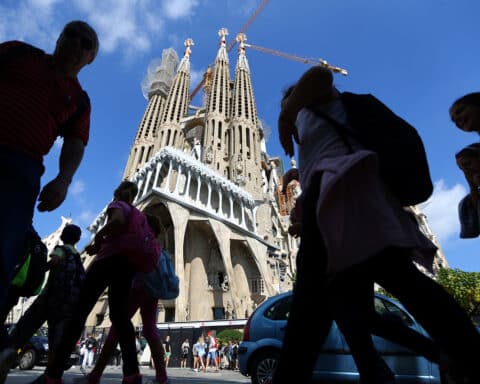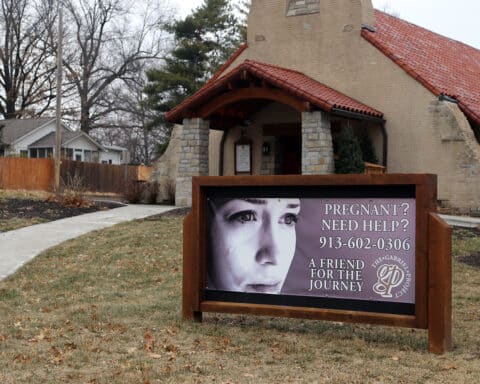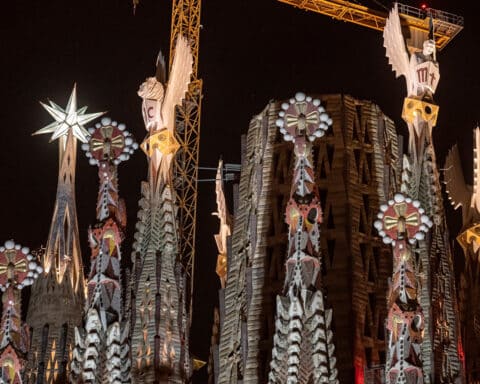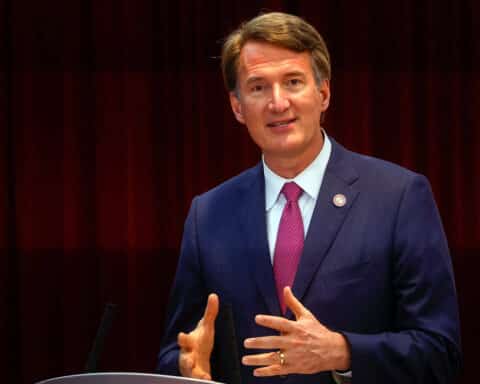(OSV News) — A Catholic church in Virginia whose first congregation filled only eight pews has been named a minor basilica by the Vatican.
Bishop Barry C. Knestout of Richmond, Virginia, announced Oct. 12 that St. Andrew Catholic Church in Roanoke was granted the title of minor basilica by the Dicastery for Divine Worship and the Discipline of Sacraments in a letter dated Sept. 6.
The designation makes St. Andrew (named for the Apostle) the only named minor basilica in the western part of Virginia and the second in the diocese. The Basilica of St. Mary of the Immaculate Conception in Norfolk received the title in December 1991.
Bishop Knestout will be the principal celebrant at a Dec. 3 Mass at the Basilica of St. Andrew, during which he will read the official Vatican decree and bless the physical symbols signifying the church’s newly elevated status.
Those symbols, which speak to the basilica’s unique connection with the pope, are the ombrellino, or umbrella, a silk canopy whose red and yellow stripes signify the papal colors; the tintinnabulum, a small bell mounted on a pole and carried in procession on special occasions; and the papal cross keys.
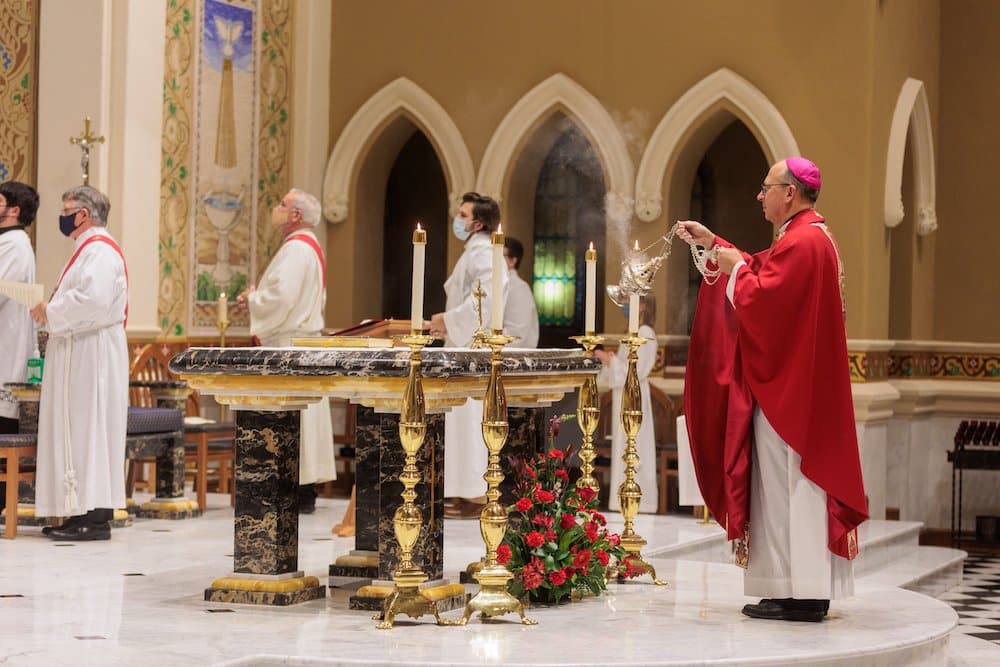
To show its special bond with the pope, a basilica must also celebrate with particular care the Feast of the Chair of Saint Peter the Apostle (Feb. 22); the Solemnity of Saints Peter and Paul, Apostles (June 29); and the anniversary of the current pope’s election or inauguration.
In an Oct. 12 statement, Bishop Knestout said he hoped the elevation of St. Andrew to basilica status would ultimately lift hearts toward Christ.
“I hope more individuals will be drawn to visit this special treasure, and in doing so, will … inquire about our faith,” he said, noting the decree comes “as we continue in a multiyear effort to bring attention to the real presence of Christ in the Eucharist.”
Faithful who visit a basilica to participate in any sacred rite — or to simply recite the Lord’s Prayer and the profession of faith — can obtain a plenary indulgence under the normal conditions (receiving the sacraments of Reconciliation and Eucharist and praying for the pope’s intentions) on certain occasions: the Mass at which the designation is celebrated; the anniversary of the granting of the title or the anniversary of the basilica’s dedication; the Solemnity of Saints Peter and Paul; or once a year on a day chosen by either the bishop or the faithful.
By definition, a basilica (the term for which derives from Greek for “royal court”) is a place of particular importance for liturgical and pastoral life. The church’s four major basilicas — St. John Lateran, St. Peter’s, St. Paul Outside-the-Walls and St. Mary Major — are located in Rome, with minor basilicas designated in Rome and throughout the world. In the U.S., there are some 90 basilicas.
To become a basilica, a church should also be of sufficient size, with its altar, ambo and celebrant’s chair placed according to the General Instruction of the Roman Missal. An appropriate number of priests and liturgical ministers is required, as well as a schola cantorum to assist in the faithful’s liturgical participation.
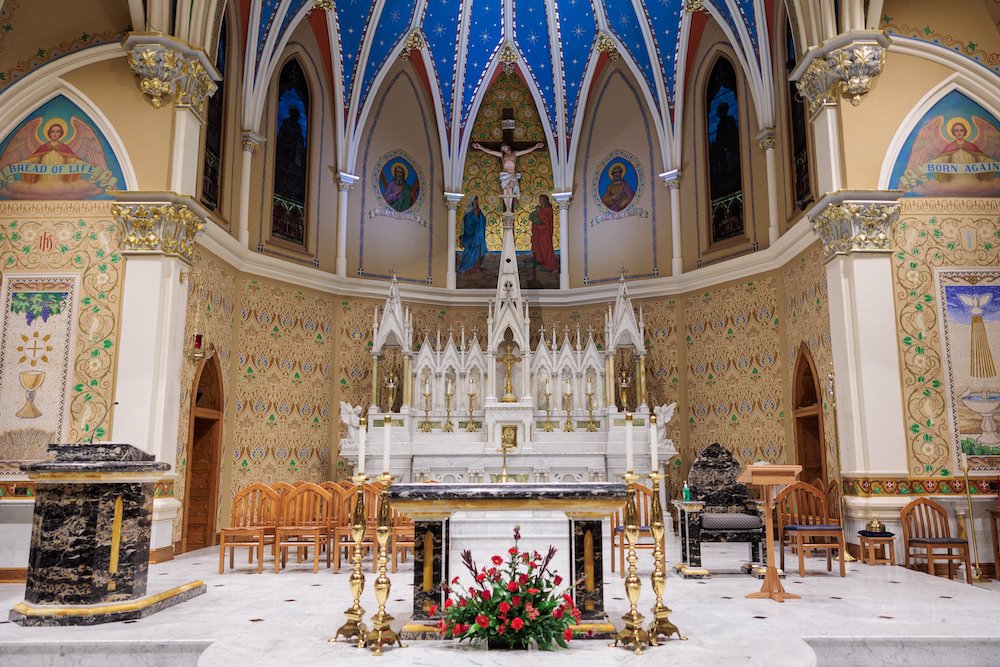
Churches named as basilicas typically have historical, artistic or architectural significance, and may contain the body of a saint, key relics or a significant sacred image.
Bishop Knestout said the “history and architectural beauty of Saint Andrew’s make it a beacon of faith.”
Established in 1882, the parish of St. Andrew held its first Mass in a railroad passenger car, celebrated by Father John W. Lynch. The parish, which began with a handful of members, outgrew its initial brick church by 1897, and in 1902 dedicated the current one, a twin-steepled Victorian Gothic church. Both the interior and exterior have in recent years been completely restored.
Among the church’s treasures are 15 stained-glass windows in the main sanctuary depicting several saints, including two large windows, imported from Germany, with images of its patron and St. Patrick.
The basilica application process can be an arduous one, requiring the petition of the local bishop, permission of the nation’s bishops’ conference, and both written and photographic documentation of the church’s history, layout and activities.
“I am grateful for the hard work of so many to bring this to fruition,” said Bishop Knestout. “May this basilica continue to be a place of personal encounter with Christ, a place of robust faith formation and through its beauty externally and in the liturgy, elevate the hearts and minds of all who attend Mass here.”

